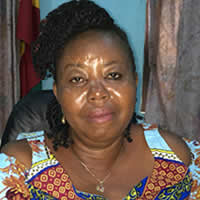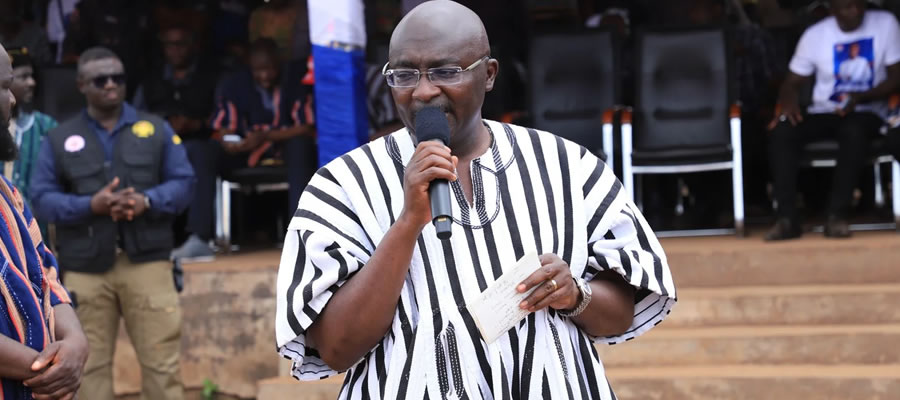

Location and Size
Ejura-Sekyedumase Municipal was carved out of the former Sekyere and Offinso Districts and was thus created as a result of the implementation of the decentralized programmes on 29th November, 1988. The district was established by a legislative instrument, PNDC L.I 1400, 1988.
The Municipality is located within longitudes 1°5W and 1°39’ W and latitudes 7°9’ N and 7°36’N. It has a large land size of about 1,782.2sq.km. (690.781sq.miles) and is the fifth largest in Ashanti region’s 21 districts. It constitutes about 7.3% of the region’s total land area with about one third of its land area lying in the Afram Plains. It is located in the Northern part of the Ashanti Region and is bounded in the north by Atebubu and Nkoranza districts (both in the Brong Ahafo region), on the west by Offinso district, on the East by Sekyere East district and the south by Sekyere West and Afigya Sekyere district.
Topography and Drainage
The landscape in the southern part is fairly rolling with valleys and peaks. Averagely, the valleys have a depth of about 135m whilst the peaks rise to about 315m above sea level. The highest point in is made up of a range of hills, found in the eastern part and passes through Ejura and Mampong, forming part of the Kintampo-Koforidua range. Examples of the hills found in the district include; Kwasi Mahu Hills (1,350), Ejurachem Scarp (1, 000) and Dente Scarp (rock outcrop) with a greater part of the districts reserve being a scarp.
On the other hand, the northern part is undulating and fairly flat with heights ranging between 150-300m. Ejura is located on an altitude of about 225m. The district is dissected and well-drained by a number of rivers, streams and their tributaries. The drainage is dendritic in nature and has a west-east and northwest-southeast directional flow. Major rivers include; Affram, Akobaa, Chirade, Bresua whilst minor ones include Aberewa, Yaya and Baba.
This implies that dams can be constructed along these rivers especially the major ones to supplement the water requirement of farmers especially during the dry season. In addition, potable water can be produced from these river bodies which can serve the water requirement of most rural communities. This can nib in the bud cases of water related diseases that are very prevalent in some communities.
Climate and Vegetation
Ejura-Sekyedumase lies within the transitional zone of the semi-deciduous forest and Guinea Savannah zones. Thus, it experiences both the forest and savannah climatic conditions. The Assembly is marked by two rainfall patterns; the bi-modal pattern in the south and the uni-modal in the north. The main rainy season is between April and November. The north-east trade winds blow dry and dusty winds across the entire period. Annual rainfall varies between 1,200mm and 1,500mm.
Relative humidity is very high during the rainy season, recording 90% in its peak in June and 55% in February. Solar radiation is very high during the dry season. The vegetation characteristics in the district are to a large extent dictated by the topography, climatic condition and patterns. The northern part is covered with sparse derived deciduous forest vegetation. Growth of the savannah vegetation is largely attributable to the high increase in the rate of shifting cultivation and bush fallowing in the district. The climatic conditions of the district together with the topographical layout are a favourable condition for the cultivation of food crops. Also the derived form of savannah vegetation at the northern part to supports the cultivation of cereals.
Geology and Soils
The underlying rock soils are of the Upper Voltaian Series with its main components being the sandstone, shale and mud stone-beds, shale intrusions and sand, and pebbly bed series. These are sedimentary rocks which result in the formation of soils derived from the weathering of the Voltaian sandstone. Soils in the Municipality are of the Savannah Ochrosol type which is mainly made up of sandy loam or clay. The major characteristics of this soil type is that they are well drained, deep, light in coluor, well aerated and rich in organic matter and plant nutrients as well as high water-retaining capacities.
They are easy to till and especially suited for mechanized farming. The type of soils found in the forest zones of the district are the forest ochrosol type. These soil types tend to support the cultivation of food and cash crops. Root tubers such as yam and cocoyam as well as cereals such as maize do well especially in such soils. This explains why maize and yam are two of the major crops grown in the district. Soil erosion is quite prevalent in the district. This has led to the formation of gullies. Also, continuous cropping using inappropriate methods have contributed to the depletion of soils and consequently reduction in soil fertility .
Natural Resources
Ejura-Sekyedumase is endowed with a great number of natural resources including gold, stone, gravel and sand. These resources serve as a good potential as they can be exploited and used for construction purposes or sold to earn income for the district. There are also clay deposits found around Frante, Aframso Nkwanta, Dukurom,Teacherkrom and Kwaseakan. Clay serves as a major material used in the construction industry such as in the construction of buildings. Basically, it is used to construct mud and brick houses as well as land Crete houses.
The stone deposits are found in Dukukrom, Bonyon and Kropo. At Anyinasu, stone quarrying is a very important economic activity which provides jobs for young men and women. Middlemen transport the sharpening stones to Kumasi.Gravel deposits are also found in and around Nkwanta, Miminaso, Drobon, Kyenkyenkura, Babaso, Beme, Ejura,Frante and Adiembra. Sand deposits are found around Ejura Frante, Nkwanta and Bonyon. Besides, there are vast lands of forest reserves with a number of wildlife species which can be developed and marketed both within and outside the country as a major tourist site.
Conditions of the Built Environment
Land Crete, mud, wattle and daub, bricks and sand Crete are the major building materials used for house construction in the district. About 60%of the houses are built of cement with 37.1% of them built with mud bricks.Iron sheets are the major roofing material used for construction of buildings. About 60.3% of the houses are roofed with iron sheets. This is followed by raffia palm which is about 33.9%. The conditions of walls and roofs in the district leave much to be expected. Only about 22.4% of the houses in the district have roofs which are not leaking. Also, about 34.5% of the houses in the district have dilapidated walls. About 62.1% also have exposed foundations.
The most predominant housing type in the district is the compound house. About 60.5% of houses in the district are compound houses. Detached houses constituted about 26.4% whereas semi-detached houses take up about 12.5%. Generally, the built environment can be said to be in good condition. About 53% of the environment was good, 21.9% was fair, 18.95 was very good and only 6.1% of the environment was bad. This is mainly in terms of erosion, stagnant waters and bushy surroundings.
Conditions of the Natural Environment
The district has about 201.11km-2 of forest reserve which house economic trees such as Odum, Sapele, Ofam, Wawa, Amire, Mahogany and Kyenkyen. The natural environment in the district is gradually being degraded. Charcoal burning is one of the predominant economic activities indulged in by the local people. Deforestation is on its peak mainly due to the charcoal burning and farm activities such as bush fallowing and slash and burn. This has various effects on water bodies, land and man. Human activities such as farming ought to be critically monitored so as not to cause serious damage to the environment in future.
Impacts of Human Activities including Farming and Bushfires
The most prevalent farming practice in the district is the slash and burn method with about 73.5% of all the farmers using traditional and intermediate technology. This practice leaves the land base and exposes it to erosion activities leading to excessive leaking and nutrients loss making the land highly infertile. This also destroys the vegetation and consequently changes the ecology of the district. Bush fires also threaten the vegetative cover of the district, in fact, about 80% of all the farmers interviewed complained of bush fire threatening their farming activities. This was attributed to the activities of game hunters and some of the farmers themselves.
About 43.5% of the households in the district use fuel-wood and 27.7% also use charcoal. This means that 71.2% of the households depend on the forest for energy. This actually contributes to the depletion of the vegetation and calls for an intensive afforestation to address the problem of land degradation. The district has about 201.11 km-2 of Forest Reserve with economic trees such as Odum, Ofam, Wawa, Amire, Mahogany, Kyenkyen and Sapele. The extent of the degradation of the environment and its effects on the natural resources such as land, water bodies and man has been very remarkable. This, however, means that the current pace of human activities, especially farming, must be closely monitored and controlled to prevent it from getting out of hand in the near future.
Date Created : 11/18/2017 5:47:31 AM











 facebook
facebook
 twitter
twitter
 Youtube
Youtube
 +233 593 831 280
+233 593 831 280 0800 430 430
0800 430 430 GPS: GE-231-4383
GPS: GE-231-4383 info@ghanadistricts.com
info@ghanadistricts.com Box GP1044, Accra, Ghana
Box GP1044, Accra, Ghana